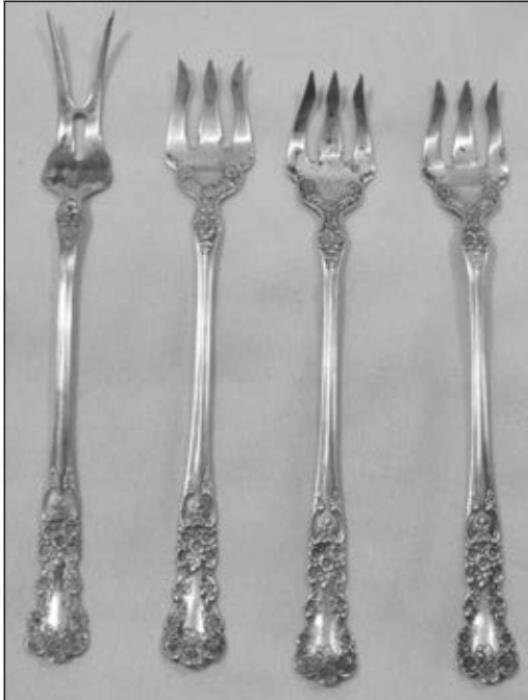Use your antique fish forks, even in serving humble food
O ne of the interesting aspects of the British and American table tops of the 1870s is the intense desire to have silver and porcelain objects crafted for specific foods. The beginnings of this …
This item is available in full to subscribers.
Subscribe to continue reading. Already a subscriber? Sign in
Get 50% of all subscriptions for a limited time. Subscribe today.
Please log in to continueNeed an account?
|
Use your antique fish forks, even in serving humble food
One of the interesting aspects of the British and American table tops of the 1870s is the intense desire to have silver and porcelain objects crafted for specific foods. The beginnings of this material culture took off with the industrial revolution, with pieces being made through mass production. Prior to this, pieces were made by hand and represented the relationship between a patron and an artist. Silversmiths and porcelain painters were talented artists who rose to the top of their craft with a combination of skill and natural talent.
Never was this talent put to use more than with the creation of tableware just for the service of fish. Fish was commonly available, either by catching it fresh or preserving it with salt. It was often served with lemon or lime. These exotic fruits brightened the taste while adding style to the table.
Silver forks, called fish forks, along with fish knives made for removing fine bones when eating, were made as individual place settings which replaced the usual knife and fork when fish was served. A long-handled spade was used for serving fish along with a multi-tined fork useful in lifting the cooked, flaking fish from a platter made just for it.
Sardine servers, also called sardine rakes, sardine boxes, terrapin forks, lemon forks, fish platters, fish plates, and lemon dishes all made their debut at the turn of the 20th century and were a housewife’s desire.
It is wonderful to use these pieces today, as they are still useful and convey a beauty not found in modern pieces.
Here is a recipe popular at the turn of the 20th century. Use your antique porcelain and silver to serve this humble food. Often the most simple things are the very best!
Charleston Salmon Patties and Grits
1 can salmon, do not drain
2 eggs
1/2 cup self-rising flour
1/4 cup heavy cream
1/4 cup Bird’s custard powder
Place all ingredients in a mixing bowl, combine with a spoon until smooth. Add 1/2 tsp. each salt and pepper.
Fry in a heavy flat pan filled with about 1/4 inch of oil. As soon as the oil is hot, add 1/2 cup of salmon mixture in the shape of a circle or oval, to the hot oil and fry until each side is golden brown. They will puff up if you use the Bird’s custard powder. Set aside and keep warm.
Cook grits in the manner you like, adding 1/4 cup salted butter at the end as well as 1/2 cup of heavy cream. Stir until these additions are incorporated. Serve the grits in a bowl and the salmon patties on a plate garnished with lemon and lime wedges as well as salt and pepper and fresh parsley.
Other items that may interest you










Comments
No comments on this item Please log in to comment by clicking here